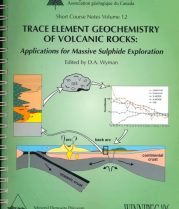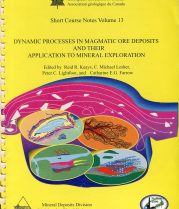
SCN 12: Trace Element Geochemistry of Volcanic Rocks: Applications for Massive-Sulphide Exploration
05/01/1996Edited by D. Wyman
ISBN: 978-0-919216-60-0
ISSN: 1189-6094
Regular: $126
Members: $69.3
$85.50
Members: $47.03
ISBN: 978-1-897095-08-9
ISSN: 1189-6094
Rare-element mineral deposits, also called rare-metal deposits, contain sub-economic to economic concentrations of a variety of lithophile elements. Rare-elements have a wide variety of uses and are becoming increasingly more important to society. A few examples of their uses are: as high-strength magnets (the rare-earth elements); in capacitors for wireless technology (tantalum); in superalloys (niobium); in coatings of the hot sections of jet engines (zirconium); in nuclear control rods (hafnium); in pyroceramics (lithium); in atomic clocks (cesium), and in automotive electronics (beryllium). Significant advances in our understanding of rare-element deposits have been made over the last fifteen years, and this, together with the increased demand for rare-elements, has created a need for a new summary of our understanding of rare-element geochemistry and mineral deposits.
Most rare-element mineral deposits are associated with highly evolved igneous rocks, either with alkaline rocks (including carbonatites), or with peraluminous granites and pegmatites. In addition, there has been considerable debate on the relative contributions of magmatic and hydrothermal processes to the mineralizing events in both environments. The aim of these short course notes is therefore to provide a synopsis of our current understanding of the behaviour of rare-elements in magmatic and hydrothermal systems, and to examine mineral deposits from alkaline and peraluminous settings.
Softcover – 352 pages (2005)

Regular: $126
Members: $69.3

Regular: $126
Members: $69.3
Regular: $85.5
Members: $47.03
Cancel